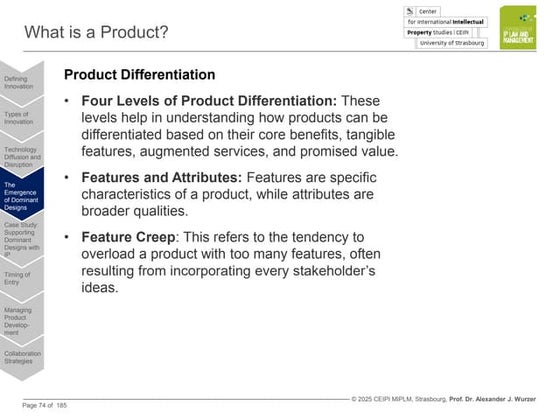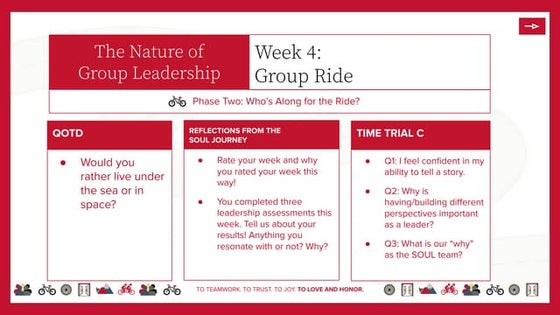Software Programming with Python II.pptx
Download as PPTX, PDF0 likes13 views
software programming python
1 of 34
Download to read offline
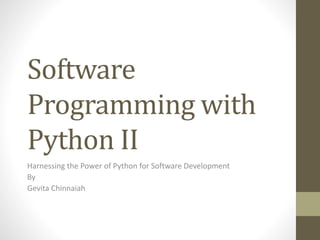


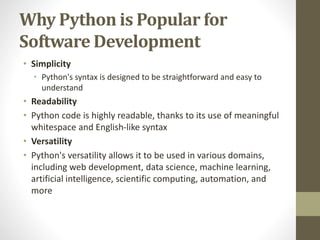


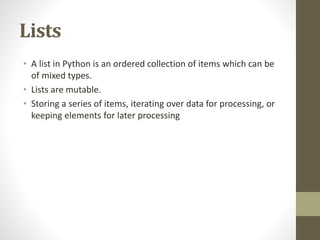









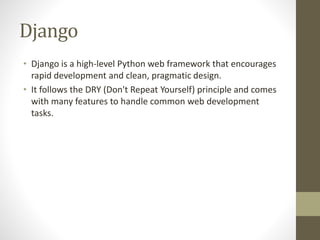

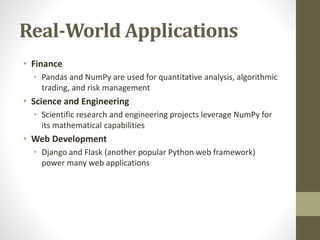















Recommended
the roadmap of python for developer beginner



the roadmap of python for developer beginneraqibfunclub7
Ěý
the roadmap of python for learning purposePYTHON UNIT 1



PYTHON UNIT 1nagendrasai12
Ěý
Certainly! Here's a detailed 3000-word description of Python:
# Python: A Comprehensive Overview
Python is a high-level, versatile, and dynamically-typed programming language known for its simplicity and readability. Created by Guido van Rossum in the late 1980s, Python has since become one of the most popular programming languages worldwide. In this comprehensive overview, we will delve into the key aspects of Python, from its history and design philosophy to its syntax, libraries, and real-world applications.
## **History and Evolution of Python**
Python's history dates back to December 1989 when Guido van Rossum, a Dutch programmer, began working on it as a side project during his Christmas holidays. His aim was to create a language that emphasized code readability and allowed developers to express their ideas in fewer lines of code compared to other languages like C++ or Perl.
The first official Python release, Python 0.9.0, was released in February 1991. Python's name was inspired by Guido's love for the British comedy group Monty Python. Despite its humorous origins, Python quickly gained popularity in the software development community.
Python's major versions include Python 1.0 (1994), Python 2.0 (2000), Python 3.0 (2008), and the subsequent 3.x releases. The transition from Python 2 to Python 3 was a significant milestone in Python's history, as it involved breaking compatibility with Python 2 to introduce improvements and address some language inconsistencies. Python 2 reached its end of life on January 1, 2020, and Python 3 is now the standard and recommended version for new projects.
## **Design Philosophy: The Zen of Python**
Python's success can be attributed, in part, to its clear and guiding design principles, often referred to as "The Zen of Python" or "PEP 20" (Python Enhancement Proposal 20). These principles encapsulate the language's philosophy and provide a framework for writing clean, readable, and maintainable code. Some notable principles from "The Zen of Python" include:
- **Readability Counts:** Code should be easy to read and understand. Python's syntax enforces this with its use of indentation for block structure.
- **Simple is Better Than Complex:** Python encourages simplicity in both code design and implementation. It favors straightforward solutions over convoluted ones.
- **Explicit is Better Than Implicit:** Code should be explicit and not rely on hidden or magical behavior. This principle promotes code clarity and predictability.
- **There Should Be One-- and Preferably Only One --Obvious Way to Do It:** Python aims to provide a single, clear way to perform a specific task to reduce confusion and make code more consistent.
- **Errors Should Never Pass Silently:** Python encourages robust error handling and reporting to help developers identify and fix issues promptly.
## **Python Syntax and Language Features**
Python's syntax is known for its simplicity and readability. Here are some key languagPython programming ppt.pptx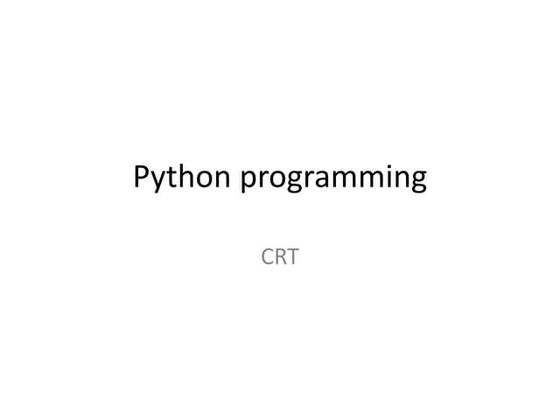



Python programming ppt.pptxnagendrasai12
Ěý
Python is a versatile and widely-used high-level programming language known for its simplicity, readability, and extensive library support. Created by Guido van Rossum and first released in 1991, Python has since gained immense popularity across various domains, including web development, data science, scientific computing, artificial intelligence, and more. In this comprehensive description, we'll delve into Python's history, features, applications, and its vibrant community, highlighting why it continues to be a preferred choice for developers worldwide.
Table of Contents
Introduction to Python
Python's History and Evolution
Python's Key Features
3.1. Readability and Simplicity
3.2. High-level Language
3.3. Interpreted and Dynamic
3.4. Cross-platform Compatibility
3.5. Rich Standard Library
3.6. Community Support
Python's Application Domains
4.1. Web Development
4.2. Data Science and Machine Learning
4.3. Scientific Computing
4.4. Automation and Scripting
4.5. Game Development
4.6. Desktop Applications
Python Development Environments
5.1. IDLE
5.2. PyCharm
5.3. Jupyter Notebook
5.4. Visual Studio Code
Getting Started with Python
6.1. Installing Python
6.2. Your First Python Program
Python Syntax and Basic Concepts
7.1. Variables and Data Types
7.2. Conditional Statements
7.3. Loops
7.4. Functions
7.5. Exception Handling
Working with Python Libraries
8.1. NumPy
8.2. Pandas
8.3. Matplotlib
8.4. Scikit-Learn
Python and Web Development
9.1. Frameworks (Django, Flask)
9.2. Front-end Integration (HTML/CSS)
9.3. Database Interaction (SQL, NoSQL)
Python in Data Science
10.1. Data Analysis with Pandas
10.2. Data Visualization with Matplotlib and Seaborn
10.3. Machine Learning with Scikit-Learn
10.4. Deep Learning with TensorFlow and PyTorch
Scientific Computing with Python
11.1. Scientific Libraries (SciPy, SymPy)
11.2. Plotting and Visualization (Matplotlib)
Automation and Scripting
12.1. Automating Tasks
12.2. Scripting for System Administration
Game Development with Python
13.1. Pygame
13.2. Unity and Unreal Engine Integration
Desktop Applications with Python
14.1. Tkinter
14.2. PyQt
Python's Ecosystem and Package Management
Python Best Practices
16.1. Code Readability (PEP 8)
16.2. Documentation and Comments
16.3. Testing (Unit Testing, pytest)
16.4. Version Control (Git)
Python's Future and Trends
Conclusion
1. Introduction to Python
Python is a general-purpose, high-level programming language that was designed with a focus on code readability and simplicity. It uses an elegant and straightforward syntax that makes it easy for developers to express their ideas effectively, reducing the cost of program maintenance. Python's philosophy emphasizes the importance of code clarity and readability, which is encapsulated in the Zen of Python (PEP 20).
The language has gained immense popularity due to its versatility and a rich ecosystem of libraries and frameworks. Python is renowned for its vibrant community and extensive documentation, making it in pIntroduction to Jupyter notebook and MS Azure Machine Learning Studio



Introduction to Jupyter notebook and MS Azure Machine Learning StudioMuralidharan Deenathayalan
Ěý
This document provides an introduction to Jupyter Notebook and Azure Machine Learning Studio. It discusses popular programming languages like Python, R, and Julia that can be used with these tools. It also summarizes key features of Jupyter Notebook like code cells, kernels, and cloud deployment. Demo code examples are shown for integrating Python and R with Azure ML to fetch and transform data.Introduction to Jupyter notebook and MS Azure Machine Learning Studio



Introduction to Jupyter notebook and MS Azure Machine Learning StudioMuralidharan Deenathayalan
Ěý
This document provides an introduction to Jupyter Notebook and Azure Machine Learning Studio. It discusses popular programming languages like Python, R, and Julia that can be used with these tools. It also summarizes key features of Jupyter Notebook like code cells, kernels, and cloud deployment. Examples are given of using Python and R with Azure ML to fetch and transform data in Jupyter notebooks.Python Course In Chandigarh And Mohali



Python Course In Chandigarh And Mohalidhimxn21o7
Ěý
At Excellence Academy, we’re more than just Python Training institute; we’re your partners in success. Start your journey with us today!https://excellenceacademy.co.in/python-training-in-chandigarh/Python Programming Certification Course In Pune



Python Programming Certification Course In Punearunbp448
Ěý
A Python course is designed to teach individuals the fundamentals and advanced concepts of Python programming. The course often includes practical exercises, projects, and real-world applications to solidify understanding.
For more information: https://datamites.com/python-certification-course-training-pune/Python Certification courses in Ahmedabad



Python Certification courses in Ahmedabadarunbp448
Ěý
A Python course is designed to teach individuals the fundamentals and advanced concepts of Python programming. The course often includes practical exercises, projects, and real-world applications to solidify understanding.
For more information: https://datamites.com/python-certification-course-training-ahmedabad/
Certified Python Programming Course in Delhi



Certified Python Programming Course in Delhiarunbp448
Ěý
A Python course is designed to teach individuals the fundamentals and advanced concepts of Python programming.The course often includes practical exercises, projects, and real-world applications to solidify understanding.
For more information: https://datamites.com/python-certification-course-training-delhi/
Certified Python Training Course in Bhubaneshwar



Certified Python Training Course in Bhubaneshwararunbp448
Ěý
A Python course is designed to teach individuals the fundamentals and advanced concepts of Python programming.The course often includes practical exercises, projects, and real-world applications to solidify understanding.
For more information: https://datamites.com/python-certification-course-training-bhubaneswar/
Certified Python Training Courses in Chennai



Certified Python Training Courses in Chennaiarunbp448
Ěý
A Python course is designed to teach individuals the fundamentals and advanced concepts of Python programming. The course often includes practical exercises, projects, and real-world applications to solidify understanding.
For more information: https://datamites.com/python-certification-course-training-chennai/Python Certification Course in Bangalore



Python Certification Course in Bangalorearunbp448
Ěý
A Python course is designed to teach individuals the fundamentals and advanced concepts of Python programming.The course often includes practical exercises, projects, and real-world applications to solidify understanding.
For more information:https://datamites.com/python-certification-course-training-bangalore/
Python Certification Course In Hyderabad



Python Certification Course In Hyderabadarunbp448
Ěý
A Python course is designed to teach individuals the fundamentals and advanced concepts of Python programming. It covers topics such as syntax, data types, control structures, functions, modules, and libraries. Students learn how to write efficient and readable code, debug programs, and implement algorithms. The course often includes practical exercises, projects, and real-world applications to solidify understanding. Python's versatility and simplicity make it a popular choice for beginners and professionals in fields like data science, web development, automation, and artificial intelligence. By completing a Python course, learners gain essential skills for various tech careers.
Certified Python Developer Courses in Mumbai



Certified Python Developer Courses in Mumbaiarunbp448
Ěý
A Python course is designed to teach individuals the fundamentals and advanced concepts of Python programming. It covers topics such as syntax, data types, control structures, functions, modules, and libraries. Students learn how to write efficient and readable code, debug programs, and implement algorithms. The course often includes practical exercises, projects, and real-world applications to solidify understanding. Python's versatility and simplicity make it a popular choice for beginners and professionals in fields like data science, web development, automation, and artificial intelligence. By completing a Python course, learners gain essential skills for various tech careers.Unleashing the Potential: Navigating the Versatility and Simplicity of Python...



Unleashing the Potential: Navigating the Versatility and Simplicity of Python...Flexsin
Ěý
Discover Python's versatility, simplicity, and efficiency in modern software development. From web dev to AI, explore its key features, applications, and why it's a developer favorite. Python isn't just a language; it's an ecosystem of innovation, simplicity, and limitless possibilities.
https://www.flexsin.com/open-source/python-development/
Python programming



Python programmingMegha V
Ěý
Python is a general purpose, dynamic, high-level and interpreted programming language. It is used widely in data science, machine learning, web development, automation and more. Python was created in the 1990s by Guido van Rossum to be an interpreted language that bridged the gap between C and shell scripting. It has many advantages like being readable, cross-platform, having a large standard library and being open source.Abhishek Training PPT.pptx



Abhishek Training PPT.pptxKashishKashish22
Ěý
This 4-week course on "Python for Data Science" taught the basics of Python programming and libraries for data science. It covered topics like data types, sequence data, Pandas dataframes, data visualization with Matplotlib and Seaborn. Technologies taught included Spyder IDE, NumPy, Jupyter Notebook, Pandas and visualization libraries. The course aimed to equip participants with Python skills for solving data science problems. It examined applications of data science in domains like e-commerce, machine learning, medical diagnosis and more.Python workshop



Python workshopMarie Behzadi
Ěý
This document provides an overview of a Python programming crash course workshop. It discusses what Python is, its history and goals, available versions, why it is popular, and key features like its standard library, modules, and popular third-party libraries like NumPy, Pandas, and scikit-learn that extend its functionality for scientific computing, data analysis, and machine learning. The workshop also covers Python basics and more advanced topics.Python workshop



Python workshopShiraz LUG
Ěý
This document provides an overview of a Python programming crash course workshop. It discusses what Python is, its history and goals, available versions, why it is popular, and key features like its standard library, modules, and popular third-party libraries like NumPy, Pandas, and scikit-learn that extend its functionality for scientific computing, data analysis, and machine learning. The workshop also covers Python basics and more advanced topics.DEMO On PYTHON WEB Development.pptx



DEMO On PYTHON WEB Development.pptxSHAIKIRFAN715544
Ěý
This document provides information about a demo on Python web development presented by Shaik Irfan. It includes details about the presenter's qualifications and experience. It then discusses front-end and back-end web development. The rest of the document outlines the course contents which cover Python fundamentals, databases, GUI development, APIs, front-end technologies and the Django framework. It also lists some common career paths that involve Python like data analysis, cyber security, machine learning and database administration.Python with dataScience



Python with dataScienceshri ram murti smarak college of engineering,technology & research
Ěý
Python is an interpreted, high-level, general-purpose programming language.
Data science is a multi-disciplinary field that uses scientific methods, processes, algorithms, and systems to extract knowledge and insights from structured and unstructured data.
Data analysis is a process of inspecting, cleansing, transforming and modeling data with the goal of discovering useful information, informing conclusion and supporting decision-making.Introduction to Python Programming Basics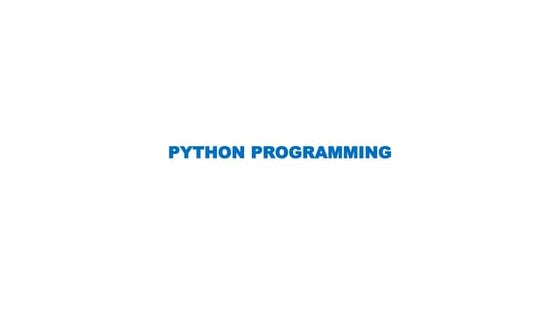



Introduction to Python Programming BasicsDhana malar
Ěý
Python is a popular high-level programming language that can be used for a wide range of applications from simple scripts to complex machine learning programs. It has a simple syntax, extensive standard library, and support for code reuse through modules and packages. Some key strengths of Python include its huge collection of standard libraries for tasks like machine learning, web development, scientific computing, and more. It is also an interpreted language, making it easy to learn and use for both simple and complex programming tasks.Introduction_to_Python.pptx



Introduction_to_Python.pptxRahulChaudhary51756
Ěý
This document provides an introduction and overview of the Python programming language. It covers what Python is, why it is used, how to use it, basic data types and containers, control flow, scientific Python packages like NumPy and Pandas, and examples of data visualization and machine learning. The document is intended to give attendees an overview of the Python ecosystem and how it can be applied to scientific and data analysis tasks.More Related Content
Similar to Software Programming with Python II.pptx (20)
Python Certification courses in Ahmedabad



Python Certification courses in Ahmedabadarunbp448
Ěý
A Python course is designed to teach individuals the fundamentals and advanced concepts of Python programming. The course often includes practical exercises, projects, and real-world applications to solidify understanding.
For more information: https://datamites.com/python-certification-course-training-ahmedabad/
Certified Python Programming Course in Delhi



Certified Python Programming Course in Delhiarunbp448
Ěý
A Python course is designed to teach individuals the fundamentals and advanced concepts of Python programming.The course often includes practical exercises, projects, and real-world applications to solidify understanding.
For more information: https://datamites.com/python-certification-course-training-delhi/
Certified Python Training Course in Bhubaneshwar



Certified Python Training Course in Bhubaneshwararunbp448
Ěý
A Python course is designed to teach individuals the fundamentals and advanced concepts of Python programming.The course often includes practical exercises, projects, and real-world applications to solidify understanding.
For more information: https://datamites.com/python-certification-course-training-bhubaneswar/
Certified Python Training Courses in Chennai



Certified Python Training Courses in Chennaiarunbp448
Ěý
A Python course is designed to teach individuals the fundamentals and advanced concepts of Python programming. The course often includes practical exercises, projects, and real-world applications to solidify understanding.
For more information: https://datamites.com/python-certification-course-training-chennai/Python Certification Course in Bangalore



Python Certification Course in Bangalorearunbp448
Ěý
A Python course is designed to teach individuals the fundamentals and advanced concepts of Python programming.The course often includes practical exercises, projects, and real-world applications to solidify understanding.
For more information:https://datamites.com/python-certification-course-training-bangalore/
Python Certification Course In Hyderabad



Python Certification Course In Hyderabadarunbp448
Ěý
A Python course is designed to teach individuals the fundamentals and advanced concepts of Python programming. It covers topics such as syntax, data types, control structures, functions, modules, and libraries. Students learn how to write efficient and readable code, debug programs, and implement algorithms. The course often includes practical exercises, projects, and real-world applications to solidify understanding. Python's versatility and simplicity make it a popular choice for beginners and professionals in fields like data science, web development, automation, and artificial intelligence. By completing a Python course, learners gain essential skills for various tech careers.
Certified Python Developer Courses in Mumbai



Certified Python Developer Courses in Mumbaiarunbp448
Ěý
A Python course is designed to teach individuals the fundamentals and advanced concepts of Python programming. It covers topics such as syntax, data types, control structures, functions, modules, and libraries. Students learn how to write efficient and readable code, debug programs, and implement algorithms. The course often includes practical exercises, projects, and real-world applications to solidify understanding. Python's versatility and simplicity make it a popular choice for beginners and professionals in fields like data science, web development, automation, and artificial intelligence. By completing a Python course, learners gain essential skills for various tech careers.Unleashing the Potential: Navigating the Versatility and Simplicity of Python...



Unleashing the Potential: Navigating the Versatility and Simplicity of Python...Flexsin
Ěý
Discover Python's versatility, simplicity, and efficiency in modern software development. From web dev to AI, explore its key features, applications, and why it's a developer favorite. Python isn't just a language; it's an ecosystem of innovation, simplicity, and limitless possibilities.
https://www.flexsin.com/open-source/python-development/
Python programming



Python programmingMegha V
Ěý
Python is a general purpose, dynamic, high-level and interpreted programming language. It is used widely in data science, machine learning, web development, automation and more. Python was created in the 1990s by Guido van Rossum to be an interpreted language that bridged the gap between C and shell scripting. It has many advantages like being readable, cross-platform, having a large standard library and being open source.Abhishek Training PPT.pptx



Abhishek Training PPT.pptxKashishKashish22
Ěý
This 4-week course on "Python for Data Science" taught the basics of Python programming and libraries for data science. It covered topics like data types, sequence data, Pandas dataframes, data visualization with Matplotlib and Seaborn. Technologies taught included Spyder IDE, NumPy, Jupyter Notebook, Pandas and visualization libraries. The course aimed to equip participants with Python skills for solving data science problems. It examined applications of data science in domains like e-commerce, machine learning, medical diagnosis and more.Python workshop



Python workshopMarie Behzadi
Ěý
This document provides an overview of a Python programming crash course workshop. It discusses what Python is, its history and goals, available versions, why it is popular, and key features like its standard library, modules, and popular third-party libraries like NumPy, Pandas, and scikit-learn that extend its functionality for scientific computing, data analysis, and machine learning. The workshop also covers Python basics and more advanced topics.Python workshop



Python workshopShiraz LUG
Ěý
This document provides an overview of a Python programming crash course workshop. It discusses what Python is, its history and goals, available versions, why it is popular, and key features like its standard library, modules, and popular third-party libraries like NumPy, Pandas, and scikit-learn that extend its functionality for scientific computing, data analysis, and machine learning. The workshop also covers Python basics and more advanced topics.DEMO On PYTHON WEB Development.pptx



DEMO On PYTHON WEB Development.pptxSHAIKIRFAN715544
Ěý
This document provides information about a demo on Python web development presented by Shaik Irfan. It includes details about the presenter's qualifications and experience. It then discusses front-end and back-end web development. The rest of the document outlines the course contents which cover Python fundamentals, databases, GUI development, APIs, front-end technologies and the Django framework. It also lists some common career paths that involve Python like data analysis, cyber security, machine learning and database administration.Python with dataScience



Python with dataScienceshri ram murti smarak college of engineering,technology & research
Ěý
Python is an interpreted, high-level, general-purpose programming language.
Data science is a multi-disciplinary field that uses scientific methods, processes, algorithms, and systems to extract knowledge and insights from structured and unstructured data.
Data analysis is a process of inspecting, cleansing, transforming and modeling data with the goal of discovering useful information, informing conclusion and supporting decision-making.Introduction to Python Programming Basics



Introduction to Python Programming BasicsDhana malar
Ěý
Python is a popular high-level programming language that can be used for a wide range of applications from simple scripts to complex machine learning programs. It has a simple syntax, extensive standard library, and support for code reuse through modules and packages. Some key strengths of Python include its huge collection of standard libraries for tasks like machine learning, web development, scientific computing, and more. It is also an interpreted language, making it easy to learn and use for both simple and complex programming tasks.Introduction_to_Python.pptx



Introduction_to_Python.pptxRahulChaudhary51756
Ěý
This document provides an introduction and overview of the Python programming language. It covers what Python is, why it is used, how to use it, basic data types and containers, control flow, scientific Python packages like NumPy and Pandas, and examples of data visualization and machine learning. The document is intended to give attendees an overview of the Python ecosystem and how it can be applied to scientific and data analysis tasks.More from GevitaChinnaiah (20)
Introduction to Python and Basic Syntax.pptx



Introduction to Python and Basic Syntax.pptxGevitaChinnaiah
Ěý
Introduction to Python and Basic Syntax
Understand the basics of Python programming.
Set up the Python environment.
Write simple Python scripts
Python is a high-level, interpreted programming language known for its readability and versatility(easy to read and easy to use). It can be used for a wide range of applications, from web development to scientific computinga basic java programming and data type.ppt



a basic java programming and data type.pptGevitaChinnaiah
Ěý
This document provides an introduction to Java programming. It discusses what Java is, its key characteristics like being object-oriented and portable, and how to get started with Java programming. It also covers Java concepts like classes, methods, variables, data types, operators, and how to compile and run a simple Java application.Install an Operating System.pptx



Install an Operating System.pptxGevitaChinnaiah
Ěý
The document provides steps for installing a Windows operating system on a computer. It outlines creating installation media, backing up files, booting from the media, selecting an edition and 32-bit or 64-bit version, accepting license terms, selecting a drive or partition for installation, removing the media and restarting, and completing the Windows setup by signing in and configuring privacy settings. Key differences between 32-bit and 64-bit versions are that 32-bit supports up to 4GB RAM while 64-bit supports more and can run both 32-bit and 64-bit software.Solve Stop Code Memory Management on Windows.pptx



Solve Stop Code Memory Management on Windows.pptxGevitaChinnaiah
Ěý
This document provides 9 methods for fixing the MEMORY_MANAGEMENT stop code error in Windows 10. It begins by explaining what memory management is and some potential causes of the error, such as software issues, hardware conflicts, RAM errors, or outdated drivers. The 9 methods provided to resolve the error include scanning for malware, running the Windows Memory Diagnostic tool, updating drivers, checking for disk errors, repairing system files, clearing temporary files, uninstalling recently installed applications, installing pending Windows updates, and resetting Windows 10.windows memory management.pptx



windows memory management.pptxGevitaChinnaiah
Ěý
The document provides an overview of virtual memory in Windows operating systems. It discusses how Windows uses virtual addressing to allow programs to access more memory than physically installed in the system using page files. When a program accesses a memory page not in RAM, a page fault occurs and the page is swapped from the page file into physical memory. The working set tracks recently used memory pages to optimize performance.Introduction to Database Management.pptx



Introduction to Database Management.pptxGevitaChinnaiah
Ěý
This document provides an overview and agenda for a presentation on database management. It covers topics such as the definition and importance of databases, different types of databases including relational and NoSQL, components of a database system, database design principles like normalization, data querying and manipulation using SQL, database security, administration and maintenance. The document also discusses normalization forms including 1NF, 2NF, 3NF and BCNF and provides examples.OPERATING SYSTEM CHAPTER 3.ppt



OPERATING SYSTEM CHAPTER 3.pptGevitaChinnaiah
Ěý
This document discusses processes and threads. It begins by defining processes and describing their states, creation, termination, and hierarchies. It then defines threads as components within a process that can run concurrently. Various thread implementations and usages are described, along with techniques for process synchronization and communication like semaphores, monitors, and message passing. The document concludes by discussing scheduling goals and algorithms for batch, interactive, and real-time systems.Lecture 3 React Native with Database.pptx



Lecture 3 React Native with Database.pptxGevitaChinnaiah
Ěý
This document discusses integrating data with Firebase in a React Native application. It outlines the steps to create a Firebase project, configure the Firebase SDK in a React Native project, add data to the Firebase realtime database from the mobile app, and retrieve and display that data in the mobile app interface in real-time. Specifically, it details how to 1) create a Firebase project, 2) configure the project in a React Native app, 3) add data to the Firebase database from the mobile app interface, and 4) retrieve and display that dynamically updating data in the mobile app interface.Database Management System (DBMS).pptx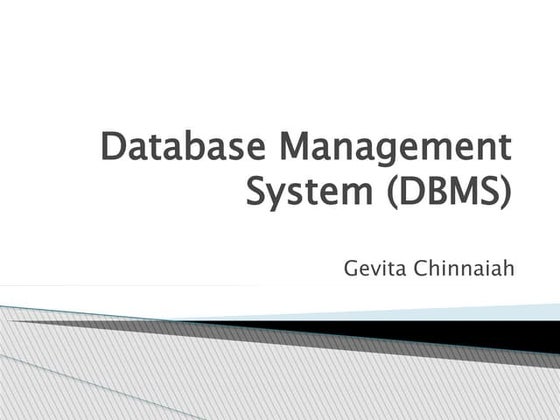



Database Management System (DBMS).pptxGevitaChinnaiah
Ěý
DBMS stands for database management system. It is a software system that allows users to define, create, maintain and control access to a database. Key functions of a DBMS include data storage, organization, modification, retrieval and user administration. Some examples of popular DBMS are MySQL, Oracle and PostgreSQL. DBMS provides advantages like data consistency, security, concurrency and scalability over traditional file-based data storage.Operating System chapter 1.pptx



Operating System chapter 1.pptxGevitaChinnaiah
Ěý
The document discusses different types of operating systems. It describes desktop operating systems, server operating systems, embedded operating systems, mobile operating systems, batch operating systems, multi-processor operating systems, multiprogramming operating systems, distributed operating systems, time-sharing operating systems, network operating systems, and mobile operating systems. For each type, it provides a brief definition and highlights some of their key advantages and disadvantages.Lecture 2 Styling and Layout in React Native.pptx



Lecture 2 Styling and Layout in React Native.pptxGevitaChinnaiah
Ěý
This document provides an overview and examples of core components, styling, and navigation in React Native. It discusses core components like <View>, <Text>, <Image>, <ScrollView>, and <TextInput>. It also covers styling components using StyleSheet and different navigation patterns like tab, stack, and drawer navigation. Practical examples are provided to demonstrate setting up a basic tab navigator and integrating search functionality into an app.Lecture 1 Introduction to React Native.pptx



Lecture 1 Introduction to React Native.pptxGevitaChinnaiah
Ěý
This document provides an introduction and overview of React Native, including what it is, its prerequisites, core components, and how to set up the development environment. Specifically:
- React Native is a framework for building mobile apps for iOS and Android using React. It allows writing apps once in JavaScript and deploying to both platforms.
- Basic JavaScript and React knowledge are prerequisites. Core components include common mobile components with built-in native implementations.
- The entry point file initializes the app and renders the root component. Setting up the environment involves installing Node, Expo, and creating a new project.Understanding Applications.pptx



Understanding Applications.pptxGevitaChinnaiah
Ěý
This document discusses different types of applications and internet services. It describes common desktop applications like word processors, web browsers, media players, and games. It also discusses categories of mobile applications. The document then covers different types of internet services including dial-up, DSL, cable, satellite, 3G/4G. It explains the equipment needed like modems, routers, and the differences between modems and routers.Operating System 2.pptx



Operating System 2.pptxGevitaChinnaiah
Ěý
The document discusses the key functions and components of operating systems. It describes how operating systems manage processes, memory, storage, security and other core system resources. It also explains the different types of kernels used in operating systems and compares 32-bit and 64-bit operating systems.Operating System 1.pptx



Operating System 1.pptxGevitaChinnaiah
Ěý
An operating system manages all the software and hardware on a computer. It allows users to run programs without knowing how to directly control the computer's memory, processor, and other hardware. Common operating systems include Windows, macOS, Linux, iOS, and Android. Operating systems are categorized based on their design and purpose, such as multi-tasking systems that allow multiple programs to run simultaneously, and real-time systems for applications like military software that require fast response times. The most widely used operating systems today are Windows, macOS, Android, and iOS.INTRODUCTION TO DATABASE AND QUERING.pptx



INTRODUCTION TO DATABASE AND QUERING.pptxGevitaChinnaiah
Ěý
This document introduces databases and querying. It defines a database as an organized collection of data stored in tables that can be queried. It provides an example of storing airline booking data in tables for first name, last name, age, booking ID, and phone number. It explains that databases allow users to store and analyze data by pulling total values from queries like finding the total gross booking amount for a year. The document outlines some common things that can be stored in databases like customers, reservations, flights, and introduces setting up a database environment in SQL Server with tools.Recently uploaded (20)
Studying and Notetaking: Some Suggestions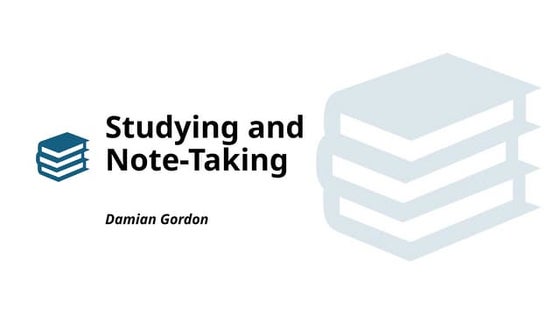



Studying and Notetaking: Some SuggestionsDamian T. Gordon
Ěý
Studying and Notetaking: Some SuggestionsSulfonamides by Mrs. Manjushri P. Dabhade



Sulfonamides by Mrs. Manjushri P. DabhadeDabhade madam Dabhade
Ěý
Describe the information about classification, mechanism of action and chemical structures of sulfonamidesGeneral Quiz at Maharaja Agrasen College | Amlan Sarkar | Prelims with Answer...



General Quiz at Maharaja Agrasen College | Amlan Sarkar | Prelims with Answer...Amlan Sarkar
Ěý
Prelims (with answers) + Finals of a general quiz originally conducted on 13th November, 2024.
Part of The Maharaja Quiz - the Annual Quiz Fest of Maharaja Agrasen College, University of Delhi.
Feedback welcome at amlansarkr@gmail.comIntroduction to Systematic Reviews - Prof Ejaz Khan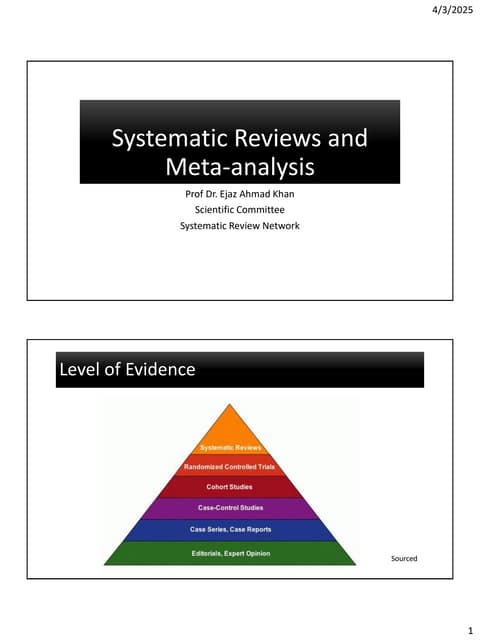



Introduction to Systematic Reviews - Prof Ejaz KhanSystematic Reviews Network (SRN)
Ěý
A Systematic Review:
Provides a clear and transparent process
• Facilitates efficient integration of information for rational decision
making
• Demonstrates where the effects of health care are consistent and
where they do vary
• Minimizes bias (systematic errors) and reduce chance effects
• Can be readily updated, as needed.
• Meta-analysis can provide more precise estimates than individual
studies
• Allows decisions based on evidence , whole of it and not partialEarly 20th Century Modern Art: Movements and Artists



Early 20th Century Modern Art: Movements and ArtistsDamian T. Gordon
Ěý
Early 20th Century Modern Art: Movements and Artists, as a reaction to Einstein, Darwin and FreudHow to Install Odoo 18 with Pycharm - Odoo 18 şÝşÝߣs



How to Install Odoo 18 with Pycharm - Odoo 18 şÝşÝߣsCeline George
Ěý
In this slide we’ll discuss the installation of odoo 18 with pycharm. Odoo 18 is a powerful business management software known for its enhanced features and ability to streamline operations. Built with Python 3.10+ for the backend and PostgreSQL as its database, it provides a reliable and efficient system. MICROECONOMICS: RENT AND THEORIES OF RENT



MICROECONOMICS: RENT AND THEORIES OF RENTDrSundariD
Ěý
CONCEPTS COVERED: RENT, THEORIES OF RENT, QUASI RENTU.S. Department of Education certification



U.S. Department of Education certificationMebane Rash
Ěý
Request to certify compliance with civil rights lawsKarin Clavel - Collection Wall: Inspiring connection and collaboration



Karin Clavel - Collection Wall: Inspiring connection and collaborationvoginip
Ěý
Lezing bij VOGIN-IP-lezing 2025, OBA AmsterdamHow to Configure Outgoing and Incoming mail servers in Odoo 18



How to Configure Outgoing and Incoming mail servers in Odoo 18Celine George
Ěý
Odoo 18 features a powerful email management system designed to streamline business communications directly within the platform. By setting up Outgoing Mail Servers, users can effortlessly send emails. Similarly, configuring Incoming Mail Servers enables Odoo to process incoming emails and generate records such as leads or helpdesk tickets. How to Manage Purchase Order Approval in Odoo 18



How to Manage Purchase Order Approval in Odoo 18Celine George
Ěý
In Odoo 18, you can set a minimum amount as a limit, and whenever an order comes above the limit, it requires the approval of the manager. In this slide, we are diving into the crucial aspect of procurement, which is managing purchase order approval. Pass SAP C_C4H47_2503 in 2025 | Latest Exam Questions & Study Material



Pass SAP C_C4H47_2503 in 2025 | Latest Exam Questions & Study MaterialJenny408767
Ěý
Pass SAP C_C4H47_2503 with expert-designed practice tests & real questions. Start preparing today with ERPPrep.com and boost your SAP Sales Cloud career! Viceroys of India & Their Tenure – Key Events During British Rule



Viceroys of India & Their Tenure – Key Events During British RuleDeeptiKumari61
Ěý
The British Raj in India (1857-1947) saw significant events under various Viceroys, shaping the political, economic, and social landscape.
**Early Period (1856-1888):**
Lord Canning (1856-1862) handled the Revolt of 1857, leading to the British Crown taking direct control. Universities were established, and the Indian Councils Act (1861) was passed. Lord Lawrence (1864-1869) led the Bhutan War and established High Courts. Lord Lytton (1876-1880) enforced repressive laws like the Vernacular Press Act (1878) and Arms Act (1878) while waging the Second Afghan War.
**Reforms & Political Awakening (1880-1905):**
Lord Ripon (1880-1884) introduced the Factory Act (1881), Local Self-Government Resolution (1882), and repealed the Vernacular Press Act. Lord Dufferin (1884-1888) oversaw the formation of the Indian National Congress (1885). Lord Lansdowne (1888-1894) passed the Factory Act (1891) and Indian Councils Act (1892). Lord Curzon (1899-1905) introduced educational reforms but faced backlash for the Partition of Bengal (1905).
**Rise of Nationalism (1905-1931):**
Lord Minto II (1905-1910) saw the rise of the Swadeshi Movement and the Muslim League's formation (1906). Lord Hardinge II (1910-1916) annulled Bengal’s Partition (1911) and shifted India’s capital to Delhi. Lord Chelmsford (1916-1921) faced the Lucknow Pact (1916), Jallianwala Bagh Massacre (1919), and Non-Cooperation Movement. Lord Reading (1921-1926) dealt with the Chauri Chaura Incident (1922) and the formation of the Swaraj Party. Lord Irwin (1926-1931) saw the Simon Commission protests, the Dandi March, and the Gandhi-Irwin Pact (1931).
**Towards Independence (1931-1947):**
Lord Willingdon (1931-1936) introduced the Government of India Act (1935), laying India's federal framework. Lord Linlithgow (1936-1944) faced WWII-related crises, including the Quit India Movement (1942). Lord Wavell (1944-1947) proposed the Cabinet Mission Plan (1946) and negotiated British withdrawal. Lord Mountbatten (1947-1948) oversaw India's Partition and Independence on August 15, 1947.
**Final Transition:**
C. Rajagopalachari (1948-1950), India’s last Governor-General, facilitated India’s transition into a republic before the position was abolished in 1950.
The British Viceroys played a crucial role in India’s colonial history, introducing both repressive and progressive policies that fueled nationalist movements, ultimately leading to independence.https://www.youtube.com/@DKDEducationEDL 290F Week 5 - Facing Headwinds and Hairpin Turns (2025).pdf



EDL 290F Week 5 - Facing Headwinds and Hairpin Turns (2025).pdfLiz Walsh-Trevino
Ěý
EDL 290F Week 5 - Facing Headwinds and Hairpin Turns (2025).pdfUrinary Tract Infection & Sexually Transmt ted Diseases.pptx



Urinary Tract Infection & Sexually Transmt ted Diseases.pptxAshish Umale
Ěý
This slides provide you the information regarding the sexually transmitted diseases as well as about the urinary tract infection. The presentation is based on the syllabus of Bachelor of Pharmacy semester 6 of subject name Pharmacology-III. The data is occupied from the high standard books and along with easy understanding of data. Software Programming with Python II.pptx
- 1. Software Programming with Python II Harnessing the Power of Python for Software Development By Gevita Chinnaiah
- 2. Agenda • Introduction to Python • Python Data Structures • Python Libraries and Frameworks • Object-Oriented Programming (OOP) in Python • Error Handling and Testing in Python • Python for Web Development • Python for Data Science and Machine Learning • Best Practices in Python Development • Conclusion
- 3. Introduction to Python • Python is a high-level, interpreted programming language known for its simplicity, readability, and versatility. • Created by Guido van Rossum and first released in 1991, Python has since become one of the most popular programming languages worldwide
- 4. Why Python is Popular for Software Development • Simplicity • Python's syntax is designed to be straightforward and easy to understand • Readability • Python code is highly readable, thanks to its use of meaningful whitespace and English-like syntax • Versatility • Python's versatility allows it to be used in various domains, including web development, data science, machine learning, artificial intelligence, scientific computing, automation, and more
- 5. Examples of Python's Versatility • Web Development • Django, flask • Data Science and Machine Learning • Numpy, pandas, ,matplotlib, • Scripting and Automation • Scientific Computing
- 6. Python Data Structures • Python provides a rich set of built-in data structures • 1. Lists • 2. Tuples • 3. Dictionaries
- 7. Lists • A list in Python is an ordered collection of items which can be of mixed types. • Lists are mutable. • Storing a series of items, iterating over data for processing, or keeping elements for later processing
- 9. Tuples • A tuple in Python is similar to a list in that it is an ordered collection of items • Tuples are immutable • Tuples can contain mixed data types
- 10. Example: Tuple
- 11. Dictionaries • A dictionary in Python is an unordered collection of items • Each item in a dictionary is stored as a key-value pair • Dictionaries are mutable • Dictionaries are incredibly useful for mappings
- 13. Data Manipulation Examples • List Comprehension • Dictionary Access and Iteration
- 14. Python Libraries and Frameworks • Python, with its vast ecosystem, hosts an array of libraries and frameworks designed to streamline software development across various domains such as web development, data analysis, machine learning, and more • Popular Python libraries and frameworks • e.g., NumPy, Pandas, Django
- 15. NumPy • NumPy is the cornerstone library for numerical computing in Python. • It provides support for large, multi-dimensional arrays and matrices • Collection of mathematical functions to operate on these arrays
- 16. Pandas • Pandas is a powerful, flexible data manipulation and analysis library. • It offers data structures like DataFrame and Series, making it easy to clean, analyze, and visualize data
- 17. Django • Django is a high-level Python web framework that encourages rapid development and clean, pragmatic design. • It follows the DRY (Don't Repeat Yourself) principle and comes with many features to handle common web development tasks.
- 18. Streamlining Software Development Tasks • Libraries and frameworks greatly reduce the time and effort required for developing software by providing pre-written code that developers can use to solve common programming tasks. • Helps in maintaining a high level of code quality and reliability • Efficiency • Security • Scalability
- 19. Real-World Applications • Finance • Pandas and NumPy are used for quantitative analysis, algorithmic trading, and risk management • Science and Engineering • Scientific research and engineering projects leverage NumPy for its mathematical capabilities • Web Development • Django and Flask (another popular Python web framework) power many web applications
- 20. Object-Oriented Programming (OOP) in Python • Object-Oriented Programming (OOP) is a programming paradigm that organizes software design around objects and data, rather than actions and logic. • OOP concepts • (classes, objects, inheritance, polymorphism)
- 21. Classes and Objects • A class is a blueprint for creating objects. It defines attributes (data) and methods (functions) that operate on those attributes. • An object is an instance of a class. It represents a specific instance of the class, with its own unique data.
- 22. Inheritance • Inheritance allows a class (child class) to inherit attributes and methods from another class (parent class). • It promotes code reusability and establishes an "is-a" relationship between classes.
- 23. Polymorphism • Polymorphism allows objects of different classes to be treated as objects of a common superclass. • It enables flexibility and code extensibility by using a unified interface.
- 24. How Python Supports OOP Principles • Built-in features such as classes, inheritance, polymorphism, encapsulation (data hiding), and abstraction • It has a clear and readable syntax • Python's dynamic typing and flexibility allow for dynamic object creation and modification during runtime.
- 25. Benefits of Using OOP in Software Development • Modularity • Code Reusability • Encapsulation • Flexibility and Scalability • Abstraction
- 26. Error Handling Techniques in Python • Try-Except Blocks • Raising Exceptions • Handling Specific Exceptions
- 27. Importance of Testing in Software Development • Quality Assurance • Reliability and Robustness • Regression Testing • Customer Satisfaction
- 28. Python Testing Frameworks • unittest: • This is Python's built-in testing framework, inspired by Java's JUnit. • pytest: • pytest is a popular third-party testing framework that simplifies writing and executing tests. • nose2: • nose2 is a successor to the nose testing framework. It provides an extended feature set and improved test discovery mechanisms.
- 29. Best Practices in Python Development • Coding conventions and style guides • (e.g., PEP 8) • Writing clean, maintainable code • Importance of documentation and code comments
- 30. Coding Conventions and Style Guides • Follow PEP 8 • Use descriptive names • Maintain consistent indentation • Limit line length • Use blank lines sparingly
- 31. Writing Clean, Maintainable Code • Keep functions small and focused • Avoid unnecessary complexity • Use meaningful comments • Write modular and reusable code
- 32. Importance of Documentation and Code Comments • Write docstrings • Comment where necessary • Update documentation and comments
- 33. Conclusion • In conclusion, we have covered several key points in today's presentation about Python in software development. We discussed Python's versatility as a programming language, its readability and simplicity which make it ideal for both beginners and experienced developers, as well as its extensive library support and community-driven ecosystem. • I want to encourage you all to further explore Python in your software development journey. Whether you are interested in web development, data science, machine learning, or automation, Python has a wide range of applications that can benefit your projects and career growth.
- 34. THANK YOU












